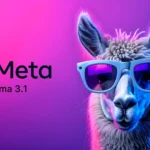RedPajama is an open-source project that aims to create leading language models. The project aims to create a reproducible, fully-open, leading language model. RedPajama has three key components: pre-training data, which needs to be both high quality and have broad coverage; base models, which are trained at scale on this data; and instruction tuning data and models, which improve the base model to make it usable and safe. RedPajama is a joint venture involving Together, Ontocord.ai, ETH DS3Lab, Stanford CRFM, and Hazy Research.
This means that RedPajama is creating models that can help computers understand and use language better, and these models are open-source, which means that anyone can use them for research or commercial applications. RedPajama provides large and high-quality datasets for training language models, such as the RedPajama-Data-v2 dataset, which includes over 100 billion text documents with 100+ trillion raw tokens from 84 CommonCrawl dumps in five languages. RedPajama also offers several base models and datasets for instruction tuning, which can be fine-tuned for specific tasks.
RedPajama has released several models, including the RedPajama-INCITE-Base-3B-v1 and RedPajama-INCITE-Chat-3B-v1. The RedPajama-INCITE-Base-3B-v1 is a base model that outperforms other open models of similar sizes in benchmarks. The RedPajama-INCITE-Chat-3B-v1 is an instruction-tuned version of the base model optimized for chat by training on open instruction data.
Customizing the model for particular tasks
RedPajama facilitates the process of customizing the model for particular tasks through the following steps:
- Select a Specific Base Model: RedPajama offers a range of base models, including options like RedPajama-INCITE-Base-3B-v1 and RedPajama-INCITE-Base-7B-v1. This base model serves as the foundation for task-specific fine-tuning.
- Choose a Relevant Dataset: RedPajama provides various datasets designed for instruction tuning, such as the Natural-Instructions dataset. These datasets are instrumental in tailoring the base model to a specific task.
- Fine-Tune the Model: The fine-tuning process involves iteratively adjusting all of the model’s weights using backpropagation techniques. Remarkably, this fine-tuning can be accomplished with readily available hardware, for instance, a single Nvidia 3090 for LoRA fine-tuning. To conduct a comprehensive fine-tuning operation, approximately 70GB of VRAM is required, which can be achieved by utilizing multiple 3090 GPUs.
- Evaluate Model Performance: After the fine-tuning process, the model’s performance can be assessed with respect to the specific task it was tailored for. This evaluation is crucial in determining the model’s effectiveness.
In essence, RedPajama empowers users to fine-tune the model for distinct tasks by selecting an appropriate base model, opting for a relevant dataset, conducting fine-tuning procedures, and subsequently evaluating the model’s performance. RedPajama offers a variety of base models and instruction tuning datasets, and it ensures that fine-tuning can be achieved with accessible hardware resources.

Conclusion
Redpajama is a powerful tool that can be used by businesses of all sizes to improve their marketing, sales, customer service, education, research, and creative writing. If you are looking for a way to take your business to the next level, then Redpajama is worth checking out.
If you are looking for a more reliable and accurate model, then LaMDA or Claude may be better options. If you are looking for a more affordable model, then GPT-4 may be a better option. However, if you are looking for a model that can generate creative and informative content at scale, then Redpajama may be the best option for you.
Ref: LLaMA 2 vs Claude 2 vs GPT-4: A Comparison of Three Leading Large Language Models




Leave a Reply